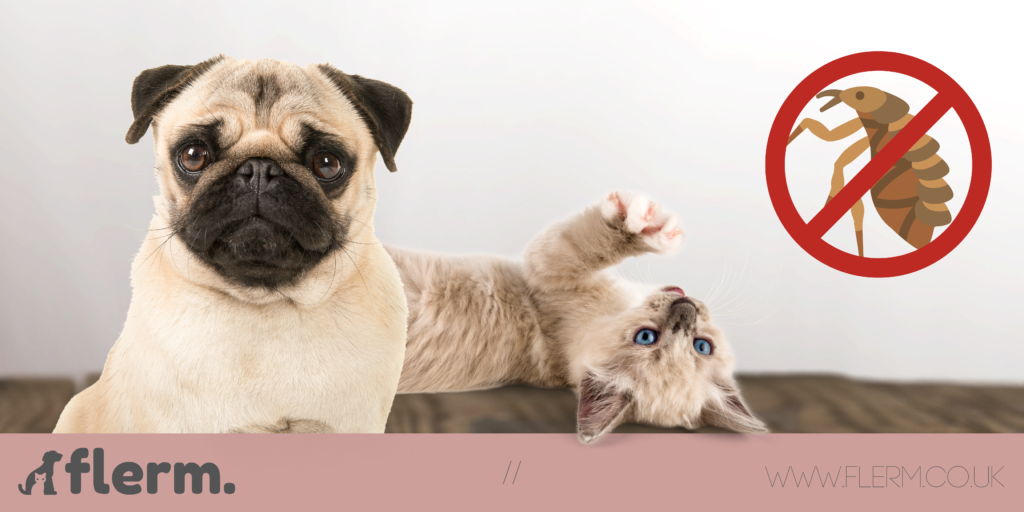If you type into Google ‘flea medication dog’ you will be bombarded with thousands of different options. From liquids to collars, and ‘natural chemical free’ alternatives!
However, as pet owners move more and more towards alternative, natural, or holistic health care it seems important now to keep separate scientific fact and opinion. I’m going to try and break down the options and current science we have available to shed light on which option might be the best for your pet.
Why the shift to ‘natural’ products?
Ectoparasites (ticks, fleas, lice etc) are becoming increasingly resistant to the synthetic products we use in attempts to keep them at bay- this is termed insecticide resistance (Ellse and Wall, 2013). This combined with our relatively newfound interest in alternative products, organic farming, and natural remedies, has resulted in attempt to produce natural preventative treatments. I often have clients say to me that they prefer the idea of natural preventatives as they seem safer and likely to do less harm. Let’s dive into that.
The questions we need to answer are:
- Do natural treatments work as well as conventional flea/ wormers?
- Are natural treatments safe to use?
The natural treatments I most often see clients using as de-wormers are hairy rabbit ears, and different seed mixes. The idea behind this is that the hair combs through the intestines and brushes out worms… A nice idea, with absolutely no science to support it unfortunately! This becomes even more problematic when we consider that two particularly dangerous worms, the lungworm and heartworm, spend none of their life cycle even in the digestive tract (Ridyard and Alison, 2005), (Bowman et al., 2009)!
For flea and tick treatment, essential oils or herbal mixes are more often what is being given to dog owners as a replacement for medication. This is problematic also, given the lack of scientific data we have on the efficacy of these products.
Unfortunately, natural flea treatments and wormers are often not subject to the same level of rigorous testing than those you’d find at your vets. Companies get away with this by marketing products under the category of ‘dietary supplements. This means that there is no regulation on the limits of each ingredient, or even which ingredients are included, with these decisions falling solely to the producer (Trumble, 2002).
In one study, natural treatments (specifically essential oils) were found to be effective against fleas but not on flea eggs (BATISTA et al., 2016). Practically this means that the treatment would appear to work for a small time, until the next life cycle of flea hatched and infested the dog. A similar study tested another essential oil mix’s effect on dog tics. They found that the natural mix was not only safe, but effective too (Amer MM 2020)! However, there are also numerous studies reporting on the adverse effects of these same natural products, with worst case scenario being death.
On the contrary, vet approved products with active ingredients such as fipronil and (S)-methoprene have robust scientific evidence supporting their effectiveness and safety (Young et al., 2004). When combined, these active ingredients show near total protection from fleas at all life stages (Franc et al., 2007), and thus current advice would be to find a product with both of these ingredients working synergistically. Flerm and ITCH pet are both online retailers of flea treatment that use these two active ingredients together.
Personally, until there is evidence to support both the efficacy and safety of these alternative products, I will not be using them on my pets, nor will I recommend them to clients. Ultimately, conventional parasite preventatives are both effective and very safe to use so I see no reason to gamble dog’s health on alternatives!
Written by:
Annie-Mae levy
Check out: http://www.ani-mal.co.uk/

Reference List:
Young DR, Jeannin PC, Boeckh A. Efficacy of fipronil/(S)-methoprene combination spot-on for dogs against shed eggs, emerging and existing adult cat fleas (Ctenocephalides felis, Bouché). Vet Parasitol. 2004 Nov 10;125(3-4):397-407. doi: 10.1016/j.vetpar.2004.07.021. PMID: 15482895.
Franc M, Beugnet F, Vermot S. Efficacy of fipronil-(S)-methoprene on fleas, flea egg collection, and flea egg development following transplantation of gravid fleas onto treated cats. Vet Ther. 2007 Winter;8(4):285-92. PMID: 18183547.
Bowman, Dwight D., and Clarke E. Atkins. “Heartworm biology, treatment, and control.” Veterinary Clinics: Small Animal Practice 39.6 (2009): 1127-1158.
Ridyard, Alison. “Heartworm and lungworm in dogs and cats in the UK.” In Practice 27.3 (2005): 147-153.
ELLSE, L. and WALL, R., 2013. The use of essential oils in veterinary ectoparasite control: a review. Medical and Veterinary Entomology, 28(3), pp.233-243.
Bakkali, F., Averbeck, S., Averbeck, D. & Idaomar, M. (2008) Biological effects of essential oils–a review. Food and Chemical Toxicology, 46, 446–475.
BATISTA, L.C.D.S., Cid, Y.P., De Almeida, A.P., Prudêncio, E.R., Riger, C.J., De Souza, M.A., Coumendouros, K. and Chaves, D.S., 2016. In vitro efficacy of essential oils and extracts of Schinus molle L. against Ctenocephalides felis felis. Parasitology, 143(5), pp.627-638.
Amer MM (2020). Efficacy and safety of natural essential oils mixture on tick infestation in dogs. Adv. Anim. Vet. Sci. 8(4): 398-407.
Dos Santos, J., De Almeida Chaves, D., De Souza, M., Riger, C., Lambert, M., Campos, D., . . . Cid, Y. (2020). In vitro activity of essential oils against adult and immature stages of Ctenocephalides felis felis. Parasitology, 147(3), 340-347. doi:10.1017/S0031182019001641
Trumble, J.T., 2002. Caveat emptor: safety considerations for natural products used in arthropod control. American entomologist, 48(1), pp.7-13.